Did you know that both male and female goats can have long pointy horns – or none at all? If you’ve ever wondered why some goats have horns but others don’t, keep reading to answer all of your goat horn-related questions!
Table of Contents
Why do goats have horns, anyway?
Goat horns serve two main functions:
Communication
Goats use their horns to communicate. A happy, friendly goat may give you a playful headbutt to engage you in a game. Or, young bucks (male goats) may headbutt each other to fight for territory or establish dominance.
Having a pair of pointy spears attached to your head at all times is pretty handy for protection!
Air-Conditioning
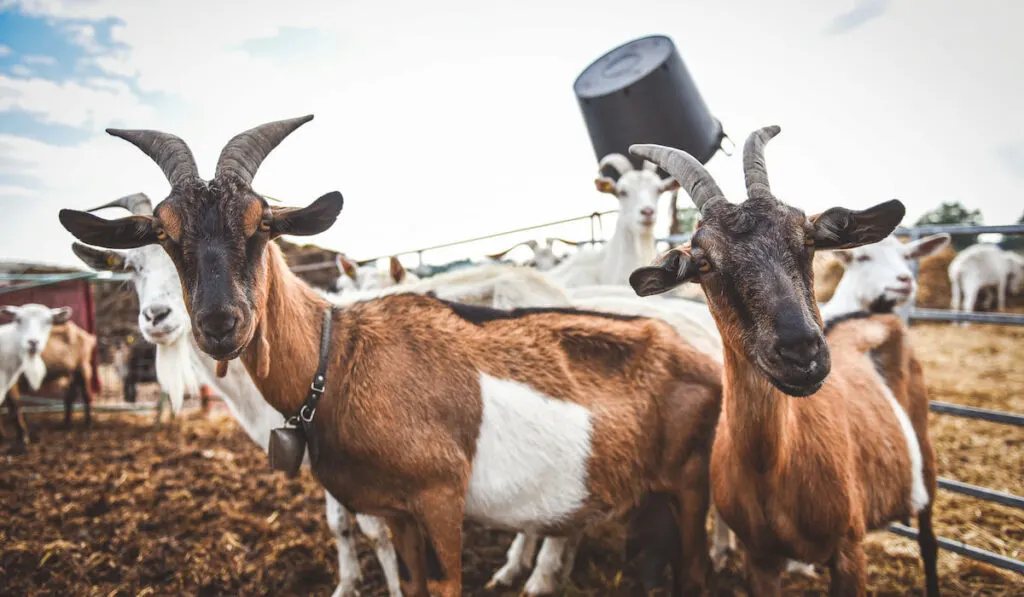
However, goats also use their horns for thermoregulation – horns keep the body cool in warm weather. (source) As blood is pumped through the goat’s body, it moves through the many blood vessels in the horns. Because the horns are exposed to the air and not buried under layers of fat and fur, the blood cools off and returns to the goat’s body at a lower temperature.
Pretty cool, right? It’s almost like a built-in air conditioning system!
Do all goats have horns?
A common misconception is that female goats don’t have horns, but male goats do. Fun goat fact – all goat breeds have horns – both males and females. So what’s going on here?
There are two common explanations for this: either the goat has been disbudded or dehorned, or it was born polled.
A hornless goat may have had his horn buds removed as a young kid, before his horns had a chance to grow in.
Or, he is a polled goat – he was born with a recessive gene that means he will grow up without any horns at all. In rare cases, a goat’s horns may be removed as an adult – but disbudding is preferable.
Why remove a goat’s horns?
Most goat keepers prefer hornless goats because horns can be quite a nuisance. An ornery goat can damage property, injure other goats, or cause serious harm to human handlers.
This is why dairy goats are almost always hornless. Imagine trying to milk a cranky goat with a set of sharp horns!
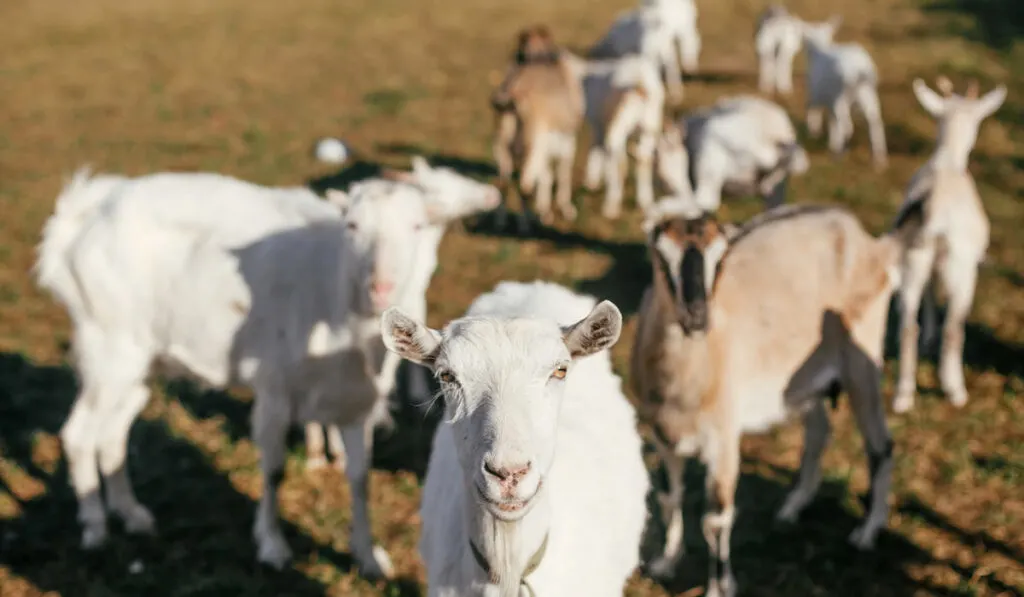
How are a goat’s horns removed?
There are several common ways to remove a goat’s horns or prevent them from growing in:
Disbudding
Disbudding a newborn goat is a very common and somewhat controversial topic. Baby goats have “horn buds” (sometimes called horn buttons) on their heads – hard little knobs underneath the skin that will eventually sprout two pointy horns.
The process itself of disbudding a goat is not pleasant, but many goat keepers believe it is necessary for the overall safety and well-being of the animal.
Baby goats are held securely in a narrow open box, and their horn buds are then burned, cut away, and cauterized. This process is best done when the goat is between 4 and 10 days old, depending on how quickly the horns begin to grow in.
While it is something of a traumatic process for the baby goat, a swift and practiced hand can greatly limit the stress the goat experiences. The good news? Young goats usually recover very quickly with proper aftercare, and go on to live perfectly normal and happy lives.
Dehorned

Sometimes the terms “dehorning” and “de-budding/disbudding” are used interchangeably, but the process is not the same.
Disbudding is done when the goat is very young, and doesn’t have any lasting harmful effects if it’s done properly. Most kids bounce back quickly, and don’t miss their horns at all.
However, actual dehorning occurs when the goat is older, and the horns have partially or fully grown in. It can be a risky procedure, and should only be done by a responsible veterinarian.
Improper dehorning can permanently damage a goat’s skull, or even be fatal.
Other methods
A scientific study out of Iran in 2014 showed that injecting clove oil into a goat’s horn buds was an effective way to stop horn growth, but this method has yet to become popular in the US. (source)
Other methods include a process called banding, which involves wrapping tight bands around a goat’s horns until they eventually fall off.
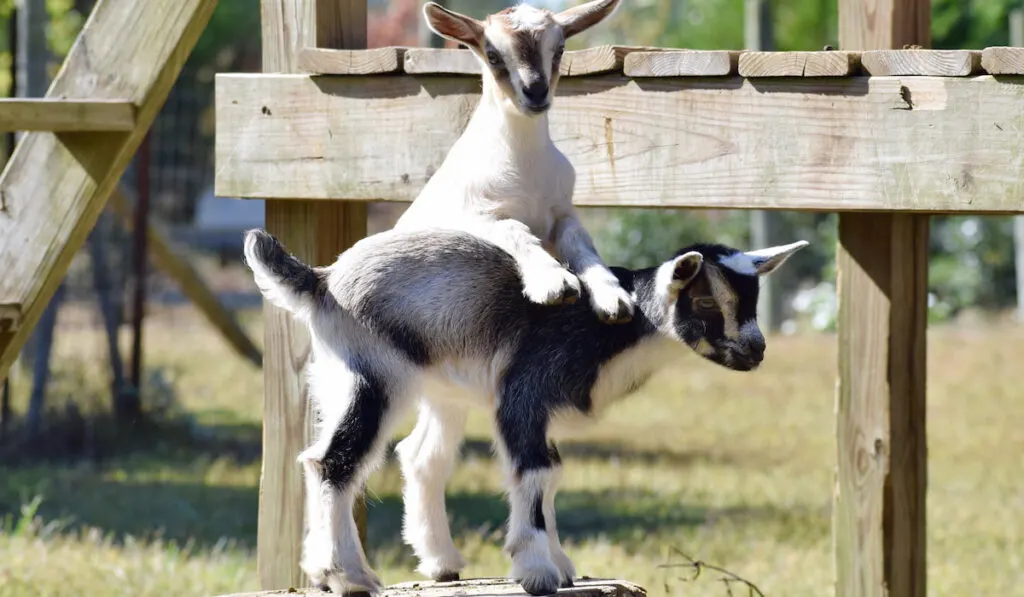
What is a polled goat?
While all newborn goats are born hornless (thankfully for the momma goat!), some individuals will never grow them at all. A goat born without horn buds is called a polled goat, and this is the result of a genetic trait. Breeding polled goats was popular in the 50s and 60s, but fell out of favor because of the probability of other genetic problems. However, the desire for a more humane way to raise hornless goats has increased in recent years, and the breeding of polled goats is making a comeback.
Why is a goat born polled?
It all comes down to basic genetics. While most goats are born with horns, did you know that the lack of horns is actually a dominant trait? Even though horned goats are more common than polled goats, that doesn’t mean that horns are the dominant trait – scientifically speaking.
In humans, having a five-fingered hand isn’t a dominant trait either. It’s just a lot more common than one with six or seven!
Traits are expressed through genes, and each gene is made of two alleles – dominant alleles or recessive alleles. Dominant alleles must be present for them to be expressed.
Here’s a very general breakdown of goat horn genetics from the American Goat Society (source)(P is the dominant allele for a polled goat and p is the recessive allele for horns):
- PP – A hornless polled goat that does not carry the gene for horns.
- Pp – A hornless polled (P) goat that carries a recessive (p) gene for horns.
- pp – A goat with horns.
Because horns are a recessive trait, both parents must carry the horn gene to produce offspring with horns.

Here are the chances of breeding various pairs of horned and polled goats:
- Horned Goat (pp) x Horned Goat (pp) = 100% chance horned offspring (pp)
- Polled Goat (Pp) x Horned Goat (pp) = 50% chance of horned offspring
- Polled Goat (Pp) x Polled Goat (Pp) = 75% polled (Pp or PP) and 25% horned (pp)
- Polled Goat (PP) x Polled Goat (PP) = 100% chance of polled offspring (PP)
(For a more elaborate breakdown of these percentages, you can make a Punnett square yourself) (source)
Breeding two polled goats together is the most efficient way to produce polled offspring, but most goat breeders don’t do this.
Studies have shown that breeding polled goats can lead to an increase in undesirable sex-linked traits – namely, intersexuality. (source)
Intersex goats possess both male and female anatomy, are usually sterile, and are not useful for many goat keepers. (source)
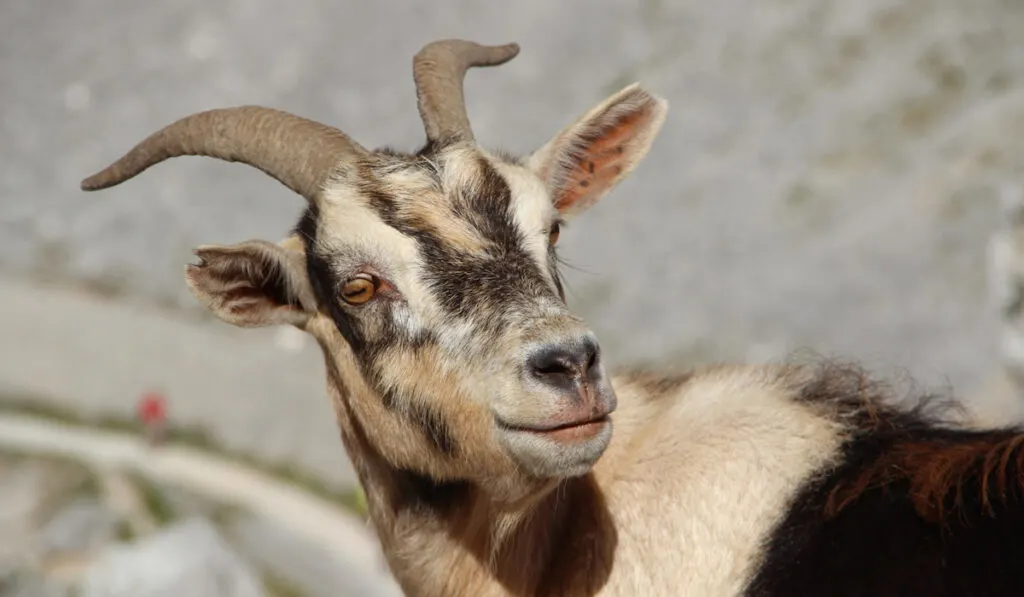
Why keep a goat’s horns intact?
Many goat keepers choose not to disbud their kids, but instead allow their horns to grow. A goat with horns may be safer from large predators or other threats.
Depending on the climate and breed, some goats need their horns to keep cool. Long-haired Angora goats generally have their horns intact – it gets awfully hot under all that fluff!
Some people just don’t want to put their goat kids through the trauma of disbudding, and choose to let nature take its course instead.
How do you make goat horns safe?
For goat owners who want to keep their goats’ horns intact, there are ways to make them safer. Some owners make their own horn guards using pool noodles or tennis balls.
There are also commercially available rubber guards that are best used for vet visits or shows.
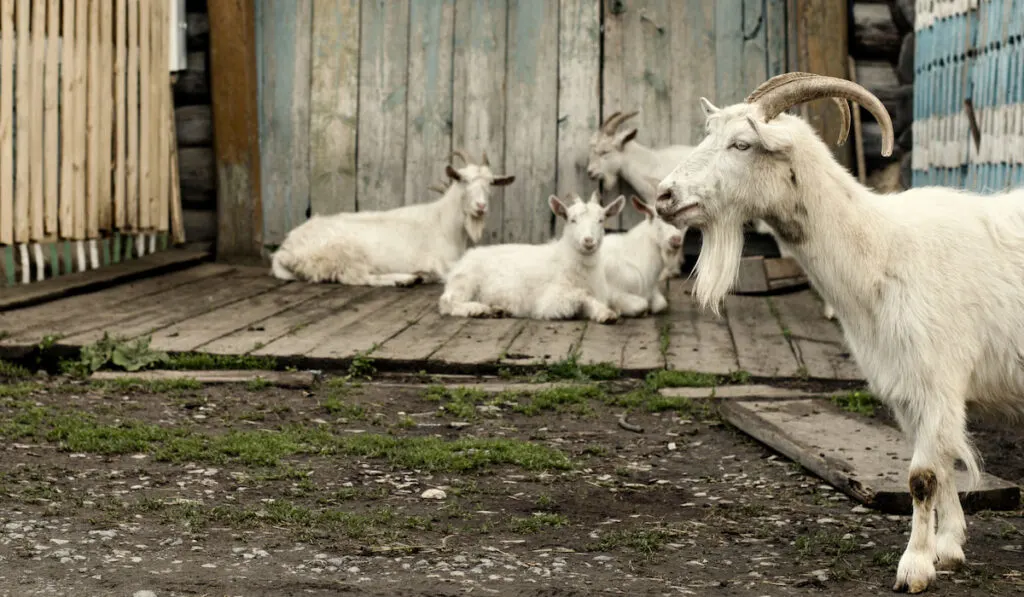
Do all goat breeds have horns?
While technically yes, all goat breeds have horns, some breeds have a higher rate of disbudding or are bred polled.
- Dairy goats will almost always lack horns, since it makes them easier to handle (and they are often not allowed at shows if they have horns).
- Nubian Dwarfs are often kept hornless because they are popular family goats.
- Angora goats will almost always have horns so that they can stay cool in hot weather.
